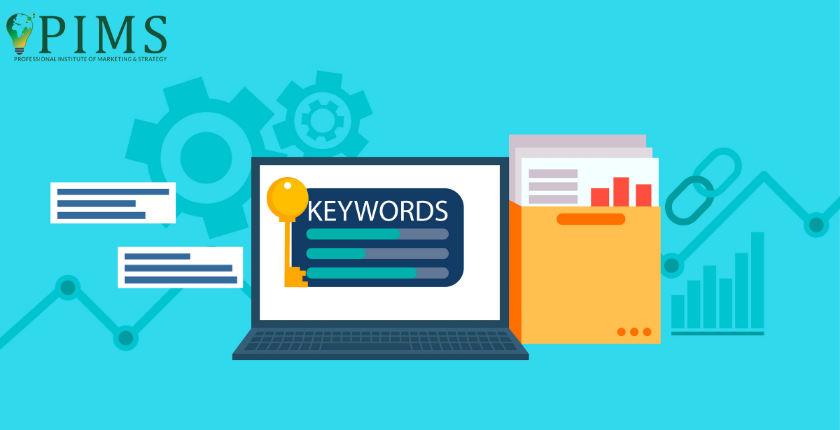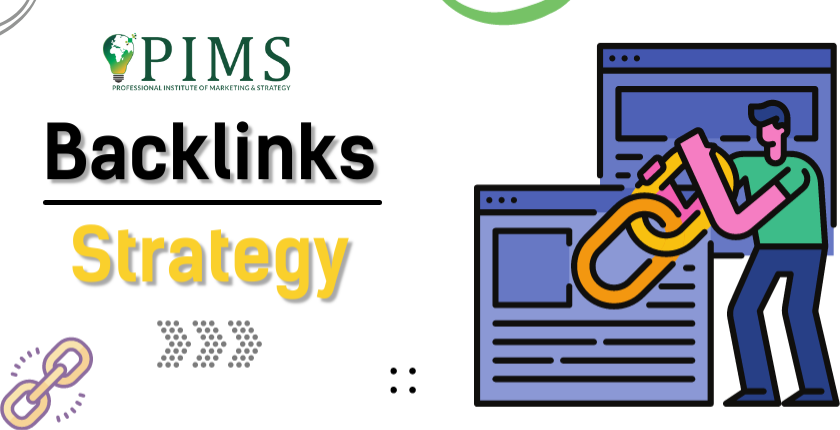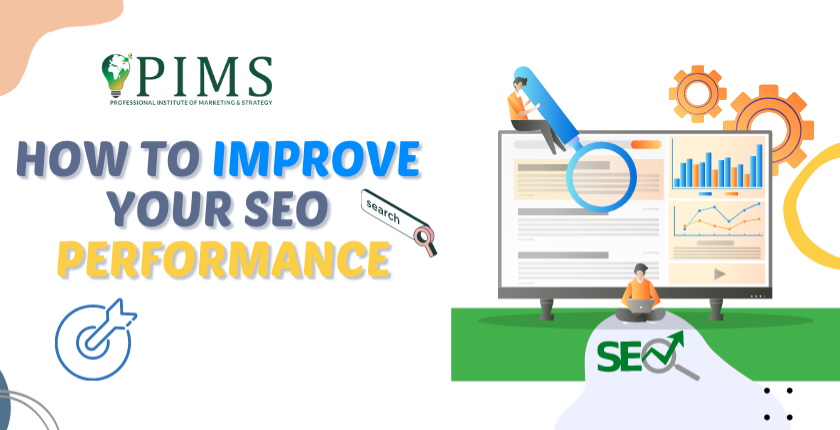Search Engine Optimization (SEO) is an assortment of methods employed to design websites and create content that helps increase your site’s visibility and your Seo performance. SEO is one of the most crucial strategies in digital marketing. The search engine ranking of your website will be improved when you do it correctly, and the traffic to your site could rise. This is the reason knowing how much your SEO marketing strategy can make a difference is crucial.
It is a good idea to track your website’s metrics, and studying the trends you discover can help you comprehend how your visitors are engaging with your content. Knowing the most vital SEO metrics to monitor, like visits to your site, bounce rates, and conversions will help you determine which strategies require tweaking and which strategies are hitting the perfect home run.
This article will provide the most important 11 metrics to improve SEO performance. It will explain what they are and how you can use them in your company. We’ll also provide strategies and tools to make sense of the information you gather,
So let’s get started!
Reasons to Track the right SEO KPIs
The process of tracking all your data from SEO and processing the data to provide you with valuable data requires time and funds. But the majority of marketing professionals spend money on Improve SEO performance metrics and keeping track of the results of their SEO.
If you do not identify the appropriate important performance indicator (KPI) for the site, the SEO approach will be “flying blind.” This is because SEO metrics will tell you precisely what your campaigns are doing regarding which keywords are receiving an answer and what tactics to use to stop wasting time and effort.
If you monitor and analyze your SEO performance metrics correctly, you’ll be able to access certain data points that can guide your decisions and improve your conversions, leads, and so on. All you need to do to get started is to determine what numbers are most important to you.
The 11 Most Important SEO Metrics You Need to Follow
Users of websites and their sites generate lots of information. To help you navigate the clutter, we’ll review eleven of the most important metrics to consider when evaluating the SEO efforts of your business.
Keyword Ranking

Keyword rankings are the position of your website in the results of search engines for specific phrases and words. For instance, if, for example, you run a construction firm and you are searching for the word “building,” it may cause your website to not appear on the first page of results. If you’ve utilized different SEO ranking methods that concentrate on the term contractor, your website will be more prominent in searches that include that particular term.
The higher your site’s placed for keywords relevant to your site and phrases, the greater visibility it can attain to your target audience. That means you’ll need to conduct some investigation to identify which words and phrases your targeted customers are looking for to boost this measurement.
To begin tracking the rankings of keywords and other relevant data to start tracking your keyword rankings, you can utilize various SEO tools. Google Search Console is the most suitable place to start when you’re on a tight (or insufficient) budget, and the other options offer scalable pricing according to your requirements.
If you’re searching for more of a robust tool, we suggest Semrush is an SEO software that five million marketers across the globe have faith in. Semrush’s Position Tracking tool lets you determine how your website ranks in search results for your desired keywords as well as paid-for results daily while providing you with your SEO performance review. Additionally, you can gain in-depth insight into the most popular keywords used by your competitors.
Backlinks
Backlinks are hyperlinks to your site from another website. Many backlinks function as references, indicating the source from which the information originated and directing users towards the source. Search engines are more likely to favor websites with many backlinks, especially when they’re from reliable sources.

Making backlinks can be a challenge because you aren’t controlling who is linking to your website. The majority of tools available on the market for backlinks focus on tracking the backlinks already on your site and using that data to assist you in developing more effective content strategies.
For instance, Linkody is a backlink-specific tool that offers a variety of valuable attributes.
This tool for backlinks allows you to monitor the people who are linking to you and identify and correct any errors on the link. It is also possible to connect with Google Analytics.
Keep in mind that quality counts equally as quantity when it comes to getting suitable backlinks. It’s beneficial to see the total increase in backlinks, but you must ensure that as many as possible come from reliable and well-ranked websites.
Organic Search Traffic
Organic search traffic is a type of traffic that visits your site via search engine results instead of other channels, such as Facebook, social media, advertisements, or backlinks. One of the easiest methods to monitor this website traffic is Google Analytics.
The importance of organic search is that those who visit your site in this manner typically do so with an end goal in their minds. 51% of web traffic is organic, and over 40% of the revenue is made through it.
In other words, increasing this measure is one of the most effective ways to improve conversion rates. and improve SEO performance.
To generate organic traffic, you need skilled SEO techniques and targeting the audience, which you can learn from an online SEO course from PIMS. This means that monitoring the performance of this metric in the course of time is crucial and allows you to determine the strategies that are working and what needs to be changed.
Top Exit Page for Organic Traffic
Another important analysis to track is what page a user visited before they left your site. This is referred to as the “exit page.” Having this information on hand could be as vital as keeping track of your organic traffic.
This is because the better you can understand why users decide to leave your site in the first place, the easier it will be to persuade them to stay for a longer time. If your top pages that are exciting have certain elements of commonality, like specific types or styles of content, this could indicate that your audience seeks something unique.
Google Analytics is one of the best tools to monitor the top exit pages on your site. It is easy to access your Exit Page report and see the entire data breakdown.
Breakdown of organic traffic from Search Engines
There’s more information to be discovered about your organic traffic data beyond the number of users who came across your site through keywords. Google Analytics offers a detailed analysis of the amount of traffic.
Under the Acquisition > All Traffic Channels menu, you’ll see keywords listed concerning other important data points.
This is a measure of the number of users who came to your site using specific keywords, the length of time they spent on pages, and if they resulted in revenue for your site. Understanding the source of your organic traffic and what it’s doing helps you pinpoint the issues to address (such as an excessive organic traffic rate that hasn’t resulted in any conversions).
Pages Views per User
Pageviews indicate how many pages on your site were viewed within a certain time. It’s not the same as your traffic count because many people visit multiple pages.
This implies the page view is a measure that should be viewed in conjunction with other figures. For instance, the average number of pages per day or users can show how engaged your website is.
It is also possible to look at this measure in conjunction with the amount of time people spend on your website. This will give you a good idea of the performance of your content. Are readers shifting from page to too quickly or spending long periods reading each page?
If any of these numbers seem alarming, re-examining your website’s content and re-examining any market analysis are the two options to improve the user experience and Improve seo performance.
Average Time on the Page
Monitoring your website’s user’s average time spent on your site is challenging. This is because a myriad of factors affect user behavior. For instance, a tab closed but inactive on a web browser for hours should not count as an element of the user’s “time on page.”
Problems with technology can result in issues keeping users to your website. If you suspect that this is an issue, test your site’s loading speed using a tool like Pingdom.
You may also employ one of the many optimization strategies to increase your site’s performance speed.
New users vs. Returning Users
Monitoring your numbers of returning and new users is an excellent indication of how your target users react to your advertising or SEO activities. If, for instance, you’ve got more customers returning than brand new ones, that is a sign that you have earned an amount of trust and confidence with your clients.
But, it could also suggest that even if your current customer base is stable and reliable, you might have to invest more time and money getting new customers. One approach is to go back to your market research for your targeted audience and examine if something changes or any new market opportunities have emerged to guide your SEO efforts.
In addition, the high number of new users is an excellent indicator that your strategies for promoting are successful. If, however, the number of returning users isn’t high, then you might have to work on your website to improve SEO performance metrics to get the attention of these new users more effectively.
Bounce Rate
The bounce rate of your website is a measure that measures how many people abandon your site and do not engage in any form of content. Visitors may land on your homepage, visit the site, browse, but not click something, then go away. If there are no further actions completed or pages viewed are not viewed, it’s considered to be a “bounce.”
This number is calculated by dividing the number of “nonactive” users by the overall number of people who came to your website in the same period. You can also use Google Analytics’ Behavior > Overview report to see an instant overview of the bounce rate on your site.
Average bounce rates differ based on the industry and type of website. In general, however, the presence of a bounce rate greater than 50-60 percent could indicate that there is an issue with your website’s content. Take a look at other metrics we’ve talked about, like the top exit pages and the average time spent on a page to find out what’s causing visitors to abandon your site. You can then change your strategies and content to keep them there.
Page Speed
A slow-loading page can affect your overall performance online. If your blog is running or an online store, No one would like to wait for your website to load fully.
One Google study discovered that waiting for between one and three seconds increases visitors’ likelihood to leave your site by 32 percent. The golden rule keeps your loading times to less than two seconds. However, the smaller they are, the more effective.
It is possible to make your site faster. The best place to begin is by testing the speed of your site using a tool such as Pingdom and GTmetrix. These tools will assist you in identifying areas of your site that might cause problems for your site’s performance.
Conversion Rate
Conversion rates are among the most important SEO performance marketing measures to monitor in many instances.
Conversion occurs when people to your website complete the actions you’ve encouraged users to complete. For example, if, for instance, you have blogs, it could be when a subscriber sign-up for your newsletter. For companies, it is typically defined as a sale that has been completed.
Whatever your objective may be, it is a great method of determining if the SEO ranking approach is functioning. If you’re unhappy with your conversion rates, then you can utilize your analytics tools to take a look at your conversion statistics and determine where improvement could be needed.
For instance, in Google Analytics, you can set up “goals” in your dashboard. These are specific actions that are counted as conversions and recorded. This lets you focus on the specifics of your goals and collect a complete and extensive collection of data on conversions.
How to keep your SEO momentum Running by Performing Quality Control Tests
It is important to be aware that your statistics reflect the effort you’ve put into improving your website and expanding your audience. There are additional elements that are not directly related to SEO ranking that you’ll need to monitor.
Here are some additional aspects that could affect the way your site performs in the eyes of search engines:
- Crawl errors may signify that search engines may not index your website’s information correctly.
- The number of pages crawled daily can be found on Google Search Console and can be used to keep an eye on your website’s performance concerning SEO.
- Duplicate descriptions and titles can affect your rankings in search results. However, you can use an application such as Yoast SEO to tidy the mess.
- Local visibility refers to the focus of your SEO strategy on your local region by registering your business with Google My Business.
- CTRs are a measure of click-through rates (CTRs) usually refer to marketing campaigns or advertising campaigns and are a crucial indicator of the efficacy of your marketing campaigns.
Each of these elements is crucial to improving your SEO ranking. Of course, how well your website’s content is written plays a significant role in how your website performs in the search results, and that’s something to consider also.
Become an SEO expert today
We can assist you if you want to learn the most appropriate engagement measure, understand digital marketing, or put together an SEO strategy! Opt to take an advanced SEO training course at PIMS today.


